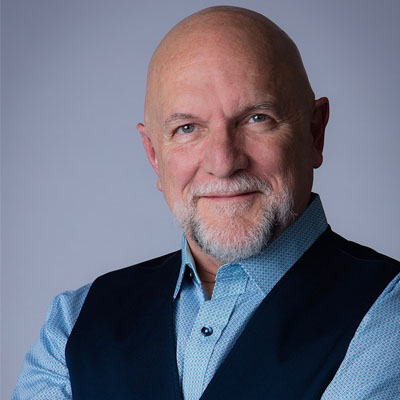
By Dr. Tim Seelig–
This article started out as an experiment. I got the go ahead from the folks at the Bay Times to write an article using the new proliferation of AI tools. I was very excited to give it a try. I expected to have a gay old time (at their expense) and trick them into creating something interesting if not a bit salacious.
My first attempt was to ask them (or is it an it?) to write a 200-word story about San Francisco, its music, and queer life. In about 2 minutes, I got a fabulous blurb perfect for any travel brochure—probably “stolen” from a travel brochure.

I honed in and added the San Francisco Gay Men’s Chorus. Wow. I got the most perfect synopsis of the chorus, its history and present. It was perfect, if a little Wikapedia-esque. Still, nothing interesting, so I added San Francisco, leather, drag, queer, fetish. Again, a perfect overview suitable for all ages. It at least included the Oasis and Folsom Street Fair!
The AI entities were smart. They did their work in the blink of an eye. They were perfectly written from a grammar, syntax, spelling perspective. They were well “thought” out. But, in the end, they just weren’t real. There was not a hint of individualism or, goddess forbid, humor. There was nothing to draw you in or keep you interested. So, at least for the time being, my conclusion is that real is better. Much better.

There is obviously one thing AI can’t do: stream of consciousness, my favorite pastime!
This venture made me ponder the “Is It Real or Memorex” commercial from the 1980s where we were challenged to decipher between live performance or cassette recordings; much like my test of live vs. AI. There were many days, as recordings were perfected, when it was feared that audiences would no longer want to see or hear live performances. Why would they when they had perfection at home, in their pajamas, by the fire with a hot toddy? I am so happy to say that was not the case at all.
Performing arts are alive and well and booming—partially thanks to the absence during COVID-19. We still want to see live things. There is still the thrill of seeing real people doing real art. There is a connection you just can’t get listening to a recording. There is also the ever-present excitement of performers making slight changes, holding a note a little longer, or even a mistake. Everyone loves it when the actors on Saturday Night Live crack themselves up. That’s the human element we love so much.
So, the fear was unfounded. It wasn’t live performances that died out—it was the recordings! People are not buying recordings anymore. I’ve got the data. I also know this from firsthand experience since my partner is a singer/songwriter. A large part of his income from 2010 to 2020 was in CD sales on his tours. That has dried up and streaming has done immeasurable financial damage to all independent artists.
The data is startling, and it has changed drastically over the last decades. Of course, the huge decline is due to (not thanks to) digital music and streaming. There is also the decline in CD sales because computers and cars stopped putting those little horizontal slits in their products.
This is fascinating:
(To view an animated chart of the various music delivery products by year, go to: https://tinyurl.com/2s4p76jp )
Here’s the smart analysis from the American Enterprise Institute where I got the aforementioned numbers. According to economist Joseph Schumpeter, the “gales of creative destruction” describe the “processes of industrial mutation that continuously revolutionize the economic structure from within, incessantly destroying the old ones, incessantly creating new ones.” Physical music formats (LPs, tapes, CDs) have been “destroyed” and have now pretty much all been replaced with streaming music. And in each successive destruction and mutation, the music formats got better, cheaper, more widely available, and more convenient.
All this brought me to pondering how things do indeed rise and fall in popularity and usage. I’m thinking I’ll write an entire article about the things we use in daily life that have been killed off by new-fangled inventions! But, in the end, I guess we chalk it up to progress. I didn’t have enough space here to visit the visual side of things: VHS, Beta, DVDs, and streaming. It does no good to long for the old 8-track days any more than it does to pine away for simpler times of the milk man and rotary phones.
I will, however, grieve a bit for the landfills all over the world littered with vinyl, 8-tracks, cassettes, and CDs. We are sadly a disposable lot. In the end, regardless of what has happened to our methods of delivering music to listeners, I hope and pray we don’t ever give up on humans writing and singing and playing live and in person.
With my recent attempt with AI, I think my “job” writing articles is secure.
Dr. Tim Seelig is the Conductor Laureate of the San Francisco Gay Men’s Chorus. http://www.timseelig.com/
TLC: Tears, Laughs and Conversation
Published on April 6, 2023
Recent Comments